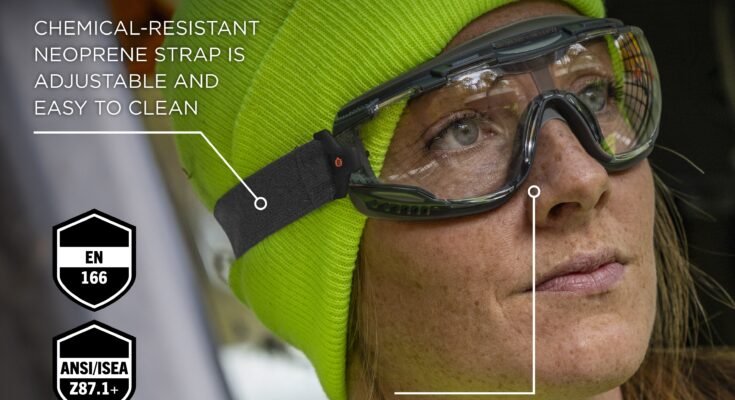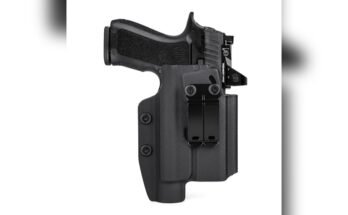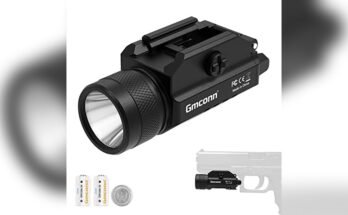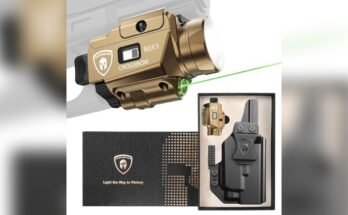I’ve taught new and seasoned carriers how to set up holsters for years. The biggest wins come from the basics: safe handling, good fit, and steady practice. If you’re asking, How do I wear a holster properly?, you’re already thinking like a pro. In this guide, I’ll walk you through smart choices, simple steps, and real-world tips so your holster stays secure, comfortable, and ready when you need it.

Source: www.vedderholsters.com
Safety And Legal Basics Before You Holster
Safe carry starts before you clip on the holster. Follow core firearm safety rules at all times. Keep the muzzle pointed in a safe direction. Keep your finger off the trigger until you are ready to fire. Treat every firearm as loaded. Use a rigid holster that fully covers the trigger guard.
Know your local, state, and federal laws. Rules can vary by location and activity. Understand where carry is allowed, duty to inform, and transport rules. When in doubt, ask a qualified attorney or your local authority.
Do a quick pre-carry check:
- Confirm the firearm is safe and clear before holstering for the first time. Use a cleared, safe area.
- Inspect the holster. No cracks, loose screws, or worn clips. Trigger guard fully covered.
- Verify retention. The gun should not shake free when turned upside down.
Personal note: Early in my journey, I skipped a retention check and had a near-drop getting out of a car. A quarter turn on a tension screw fixed it. Small checks prevent big problems.

Source: www.youtube.com
Choosing The Right Holster For Your Body And Use
Pick holsters by role and body type, not hype. Your daily routine and clothing drive your choice more than any ad.
Popular holster types:
- Inside-the-waistband (IWB). Great for concealment. Works best at appendix (AIWB) or 3–4 o’clock.
- Outside-the-waistband (OWB). Most comfortable and fast. Needs a cover garment to conceal.
- Pocket holster. For small pistols. Breaks up the outline and covers the trigger.
- Shoulder holster. Works with jackets. Needs careful fit to avoid muzzling others.
- Belly band and hybrid options. Useful for athletic wear or flexible placement.
Match holster to gun size and weight. Larger pistols need stronger clips, stiffer belts, and more cant options. For small frames or hot climates, consider compact guns and breathable materials.
What to look for:
- Full trigger guard coverage. Non‑negotiable.
- Solid attachment to a quality gun belt. Clips or loops should not flex off.
- Adjustable features. Cant, ride height, and retention screws help you fine-tune.
- Comfort layer. Sweat guard, smooth edges, and backing that won’t rub skin raw.
Pro tip: Try holsters with a real gun belt. A flimsy belt makes a great holster feel bad.

Source: www.falcoholsters.com
Fit And Ride Height: Getting The Position Right
Ride height means how high the gun sits on your belt. Get it wrong and you’ll fight your gear all day.
Aim for these basics:
- IWB appendix. Grip should sit just above the belt line so you can get a full firing grip without digging.
- IWB 3–4 o’clock. The top of the backstrap should be accessible without pinching your hand.
- OWB. The slide or cylinder should sit close to the body, not flopping away.
For comfort and concealment:
- If the muzzle pokes when you sit, lower the ride height slightly.
- If you struggle to get a full grip, raise it one notch.
- Use a claw or wing (for IWB) to push the grip inward and reduce printing.
Real-life check: I set ride height in front of a mirror. Shirt on, reach for a full grip, then sit, tie a shoe, and get in a car. If anything pinches or prints, adjust one setting at a time.

Source: www.falcoholsters.com
Cant, Retention, And Draw Angle Explained
Cant is the tilt of the gun. Small changes can make big differences.
Best-practice cant angles:
- AIWB. Neutral to slight forward cant to keep the draw straight up and out.
- Strong-side IWB/OWB. 10–20 degrees forward cant often helps conceal the grip and smooth the draw.
Retention holds the gun in place. You’ll see:
- Passive retention. Friction from Kydex or fit. Adjustable by tension screws.
- Active retention. Straps or locking buttons. More secure, requires training to release.
Check your draw angle. Your wrist should stay straight as the gun clears the holster. If you must cock or twist your wrist, tweak cant or ride height. Smooth and repeatable beats fast and sloppy.
How To Wear A Holster: Step-By-Step Checklist
Follow this quick setup routine to keep things safe and consistent.
- Unload and clear. Double-check your firearm. No ammo in the room while you test fit.
- Put on a sturdy belt. A gun belt stops sag and shift. Leather or reinforced nylon works best.
- Set placement. Start with AIWB at 1:00–1:30 or strong-side at 3:00–4:00. Adjust for your body.
- Adjust ride height and cant. Start neutral. Make small changes. Test after each tweak.
- Set retention. Tighten until the gun clicks in and resists a shake, yet draws smoothly.
- Dress test. Put on your normal clothes. Reach, bend, sit, stand, walk. Note hot spots or printing.
- Safe reholster practice. Keep your finger off the trigger, muzzle away from your body, and look the gun into the holster. Slow is safe.
- Live-day check. Wear it for a short day. Note comfort and access. Adjust that night if needed.
- Maintenance. Check screws weekly. A tiny dab of thread locker can help.
My habit: I run three clean draws to the low ready before I leave home. It builds confidence and catches issues before they matter.
Concealment, Comfort, And Daily Carry Tips
Small tweaks make daily carry easy.
Clothing and belt:
- Use a slightly longer shirt with a loose drape. Patterns hide outlines better than solids.
- A half-size larger waistband helps with IWB comfort.
- A rigid belt spreads weight and keeps the grip from tipping.
Comfort upgrades:
- Foam wedge for AIWB. Tilts the muzzle out slightly and tucks the grip in.
- Sweat guard to keep metal off skin.
- Smooth backing or leather hybrid for long days.
Lifestyle habits:
- Sit and stand with a small hip hinge to reduce pressure.
- Avoid touching or adjusting your holster in public. Plan discreet checks in private spaces.
- If you change positions often (desk to car to walk), choose a holster with quick micro-adjustments.
Note: Comfort improves over the first week. Let your body adapt, but don’t ignore sharp pain or numbness. That’s a fit problem, not a phase.
Training, Dry Practice, And Maintenance
Skill makes gear shine. Build safe, simple habits.
Dry practice:
- Start with an unloaded gun and no ammo in the room.
- Work slow draws to a clear, safe direction. Focus on a full firing grip in the holster.
- Practice reholstering with intention. Slow, watchful, and safe.
Live practice:
- Use a range that allows draw-from-holster work and follow all rules.
- Start from low ready if draw is not allowed. Still valuable.
- Track times only after your technique is smooth and consistent.
Maintenance:
- Inspect daily for debris, loose screws, or cracked clips.
- Clean Kydex with mild soap. Treat leather sparingly to avoid softening.
- Replace worn parts early. A $5 clip beats a risky failure.
Training resources: Professional instruction and standardized safety rules reinforce good habits and reduce risk.
Common Mistakes And How To Fix Them
Avoid these pitfalls I see most often.
- Poor trigger coverage. Fix it by choosing a holster that fully shields the trigger and blocks foreign objects.
- Flimsy belt. Upgrade to a gun belt. Almost every comfort issue gets better.
- Over-tight clothing. Loosen up one size or choose patterns to reduce printing.
- Rushing the reholster. Slow down. Reholster only when you want the gun put away, not because the drill ended.
- Wrong cant for body shape. If your wrist bends during the draw, change cant 5 degrees at a time.
- Ignoring retention. Check tension weekly. For active devices, practice the release until it’s automatic.
If a setup never feels right after a week of tweaks, switch holsters. The right fit exists.
Frequently Asked Questions Of How Do I Wear A Holster Properly?
What Is The Safest Position To Carry A Holster?
The safest position is the one that keeps the muzzle in a safe direction and lets you get a full grip. Many prefer strong-side IWB at 3–4 o’clock or AIWB with careful setup and training. Always ensure the trigger is fully covered.
How Tight Should Holster Retention Be?
Tight enough that the gun does not fall out when inverted or during a light jog, yet smooth enough to draw without jerking. If you must yank hard, loosen a quarter turn. If it rattles or slides, tighten a quarter turn.
Do I Need A Gun Belt?
Yes. A rigid gun belt supports the holster, reduces printing, and prevents shifting. It is the foundation of a stable, comfortable carry.
Can I Reholster Without Looking?
For daily carry, it is safer to reholster with your eyes on the holster, finger off the trigger, and no clothing in the way. Speed matters for the draw, not the reholster.
How Do I Conceal A Larger Pistol?
Use a claw, wedge, and slight forward cant. Wear a patterned shirt with extra length and a good belt. Adjust ride height so the grip tucks in and you can still get a full firing grip.
What About Holsters With Manual Locks?
Active retention is great for security but requires training. Practice the release motion until it’s automatic, and confirm it does not force a trigger press path.
Is Pocket Carry Safe?
Yes, with a purpose-made pocket holster that covers the trigger. Keep that pocket empty—no keys, coins, or pens—with the gun.
Wrap-Up And Next Steps
Wearing a holster properly comes down to safety first, a smart fit, and steady practice. Choose a holster that covers the trigger and locks to a real gun belt. Set ride height and cant so you get a clean, straight draw. Train slow, reholster safer than you draw, and check your gear often. Do these, and carry becomes calm, comfortable, and consistent.
Start today. Pick one adjustment from this guide, test it for a week, and note the difference. Want to level up? Seek a class, keep learning, and share your progress with others. Subscribe for more step-by-step guides, or drop a comment with your setup and questions.
Watch This Video on How do I wear a holster properly?



